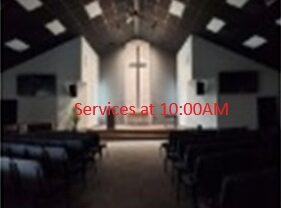Methodism began in Trenton in March of 1865 when the Rev. B. F. Mesner organized the Methodist Episcopal Church at the home of Samuel D. Luke. Charter members were: Judge Jules Songer and wife, Mr. & Mrs. S. D. Luke, Mr. & Mrs. Peter Colley, Harriett Colley, Mrs. Arbella Colley, Gibeau, J. F. Price and sister June Price Carlisle, W. C. Price, Benjamine Hayden and Mr. and Mrs. William Songer. There may have been others, but no record can be found.
Judge and Mrs. Jules Songer were grandparents of Mrs. Clara haynes, Mrs. Nellie Robinson and Mrs. Lula Barry. Mrs. Arbella Gibeau was the mother of Mrs. H. C. Steer, a prominent member of this church. Mrs. John Adams is a great-great grand-daughter of the Lukes. It is impossible to mention all the descendants of charter members.
During the year 1865, Rev. S. G. Anderson, pastor, secured from S. D. Luke, block 4 of Merrill’s Division in Trenton, now known as “five points”, where the P.N. Hirsch Co. store was once located. A four room cottage on the block was used for a parsonage.
In 1868, the north part of the block was sold to W. H. McGrath, the church retaining the 76 feet of the south part. Later the parsonage was moved to block 51 of the original town of Trenton, on West 10th St.
Services were first held in the Baptist Church on South Main St., then moving to the old court house, and later to the old Christian Church back of the court house on what is now East 7th St. In 1869, during the pastorate of Rev. Thomas Hollingsworth, a frame church costing about $2500.00 was built on the lot owned by the church at “five points”. In 1871 – 72 under the direction of Rev. T. B. Bratton, the lot at “five points” was traded to J. B. Carnes for the lot where the present church now stands. In the deal, Mr. Carnes moved the church to this site on the N. W. corner of 9th and Washington. The building was enlarged, improved, and continued to be used until 1893 when under the pastorate of Rev. J. H. Cox, the present sanctuary building was erected at a cost of about $20,000.00. A cottage next to the alley served as a parsonage in those years.
